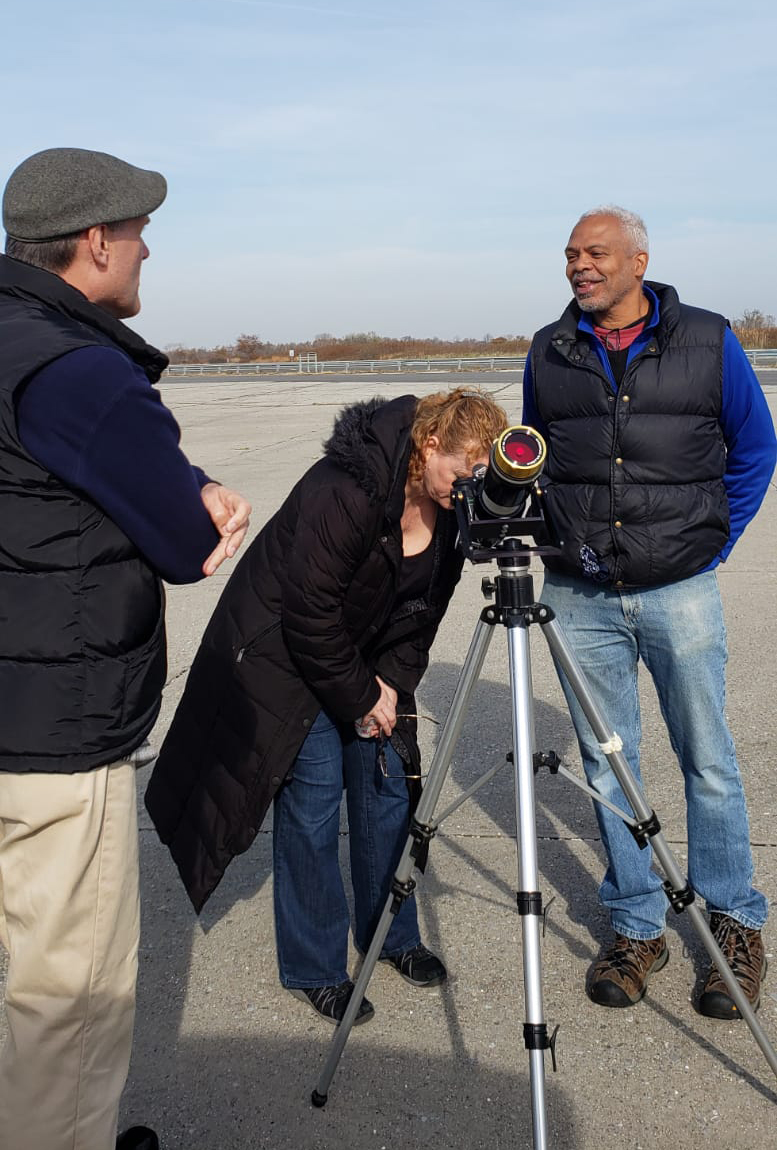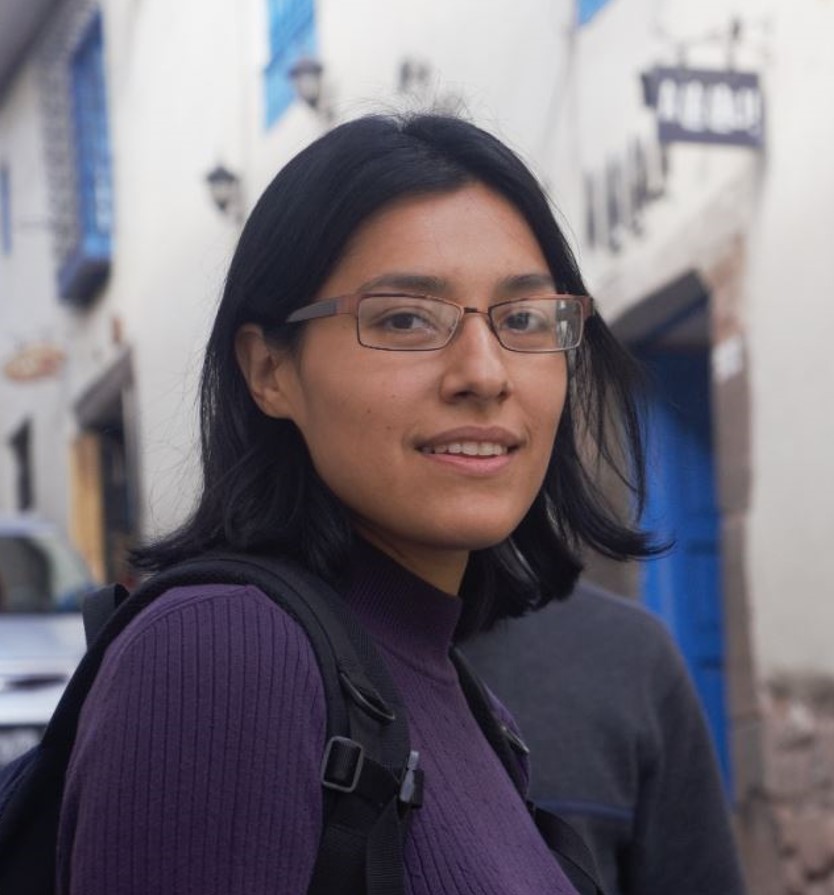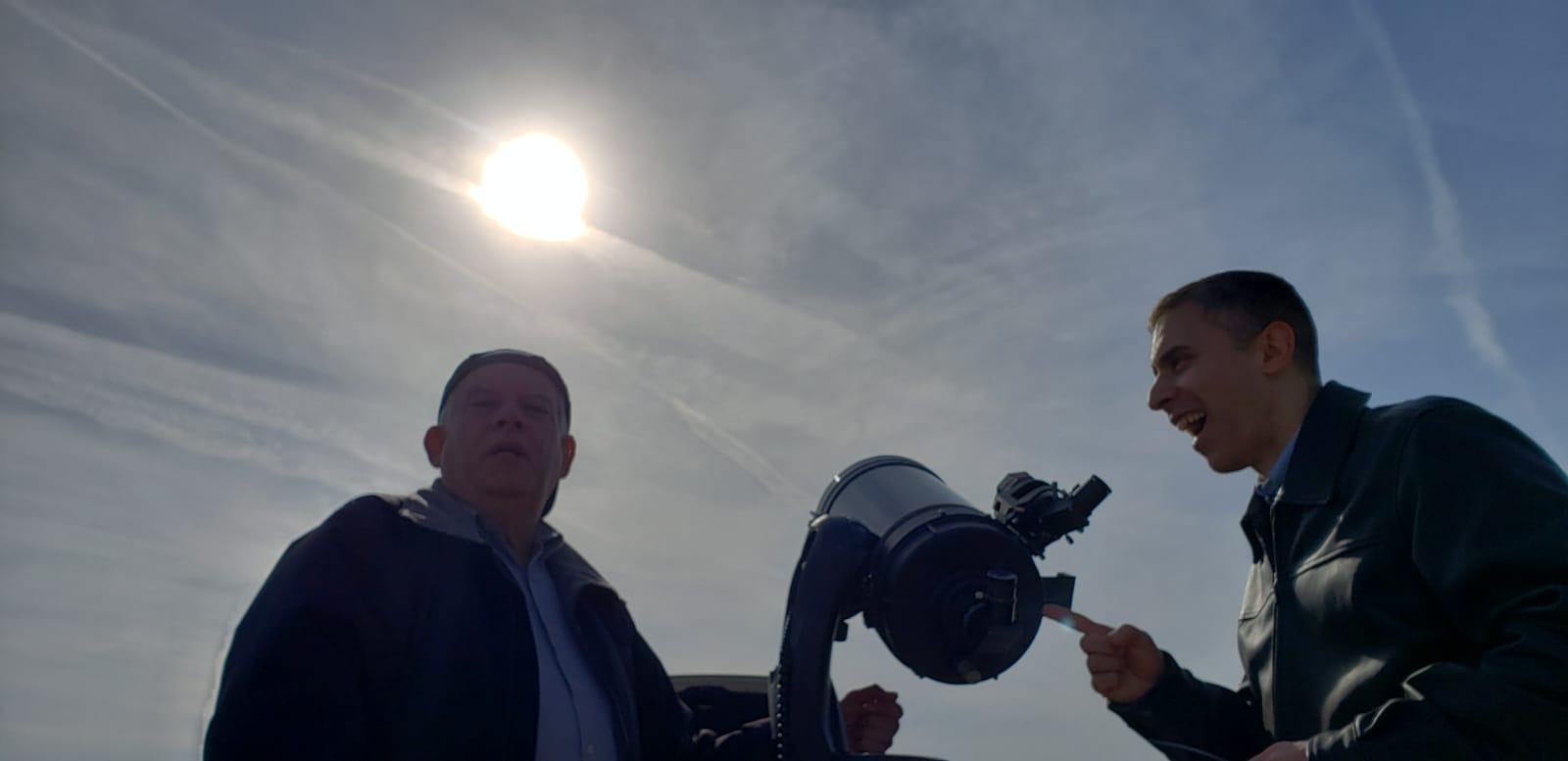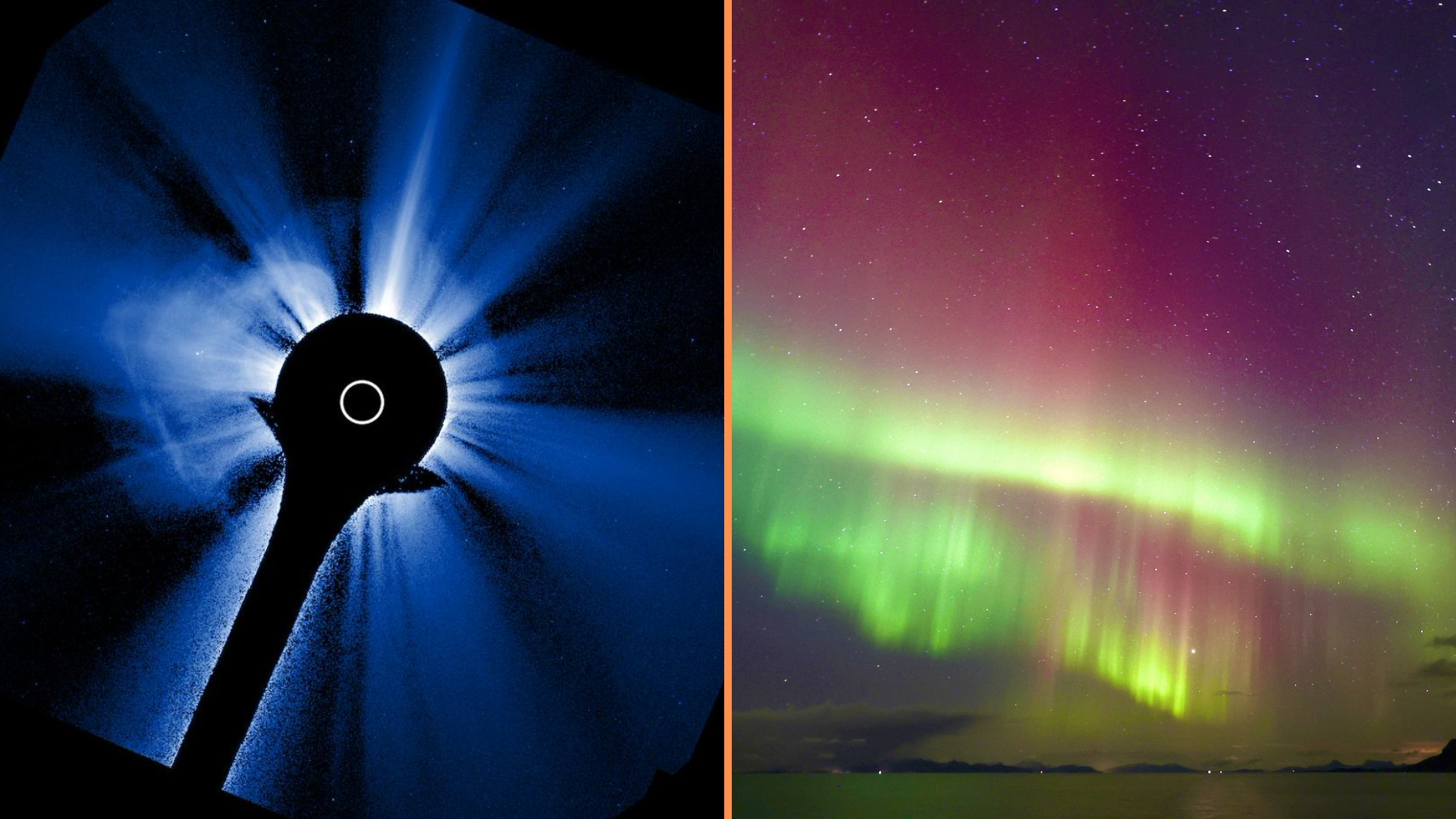New Yorkers Celebrate Rare Mercury Transit by Staring at the Sun (Safely) with Wonder
Skywatchers observed a minute of silence in honor of Veterans Day.

NEW YORK — Near the edge of Jamaica Bay, about a dozen people gathered here to watch Mercury travel across the sun on Monday (Nov. 11).
Coffee and snacks from Dunkin' Donuts sat on a table stationed near three telescopes and a handful of cars. The Amateur Astronomers Association (AAA) of New York chose to come together in an empty parking lot on Floyd Bennett Field for the rare celestial event. Perhaps it was the contrast of empty space and a tightly gathered group that caught the eye of law enforcement; a police officer briefly visited the site.
The rare event, known as a Mercury transit, won't be visible from Earth again until 2032. Monday's transit could be seen across several continents and began at 7:35 a.m. EST (1235 GMT), lasting roughly 5.5 hours.
Related: Rare Mercury Transit, the Last Until 2032, Thrills Skywatchers Around the World
The organizer for the Floyd Bennett Field gathering was Artie Kunhardt, who told Space.com he's been a member of AAA since 1975. Kundhardt said he formerly worked in plane restoration as part of HARP, or the Historic Aircraft Restoration Project, also based out of Floyd Bennett Field. He had a Celestron NexStar 8SE computerized telescope with a protective solar filter pointed toward Mercury.
Thomas, an assistant principal from a Brooklyn high school, said he's been attending AAA events for seven years. With four students in tow, he said science literacy "all comes down to first-hand experience." To view Mercury's transit, he used a Celestron telescope with a Schmidt-Cassegrain solar filter. The instrument was also fitted with another filter to turn the solar disk yellow, he said, and with a computerized mount that allowed the telescope to track the sun's motion across the sky.
"Kids love dinosaurs and outer space," he said. In general, inviting students to observe a part of Mercury's approximately 5.5-hour journey across the sun's face was a way to get the kids to touch, do and feel. "With science, you can't just 'textbook' it," he added.
Breaking space news, the latest updates on rocket launches, skywatching events and more!
Another attendee was Martin Evans, who worked as a journalist for 35 years. "This is actually my first AAA event," Evans told Space.com. Prior to Monday's event, his skywatching experience included visiting a public library in Forest Hills to get a partial view of the Great American Solar Eclipse of 2017.
According to Evans, his enthusiasm for astronomy was piqued because of basketball.
Related: Mercury Transit 2019: Photos, Videos and Explainers for the Rare Sight
"While I was writing for The Baltimore Sun years ago, I fell into the company of [the] Johns Hopkins astrophysics department. Many of their astrophysicists were fellow basketball players, so I became [interested] in astrophysics from a very good group of guys. … I was a roommate with one of them and he turned me on to his astrophysics friends."
Periodical peeping through the telescopes showed Mercury's journey through the center of the solar disk, although one patch of clouds obstructed some viewing.
But beyond the celestial event, the group honored the holiday, Veterans Day. At 11:02 a.m., they observed a minute of silence.
- A Mercury Transit for the Ages: November 1973
- The Mercury Transit of 2019 in Photos! The Best Views Until 2032
- This NASA Scientist Is So Excited About the Mercury Transit of 2019. Here's Why
Follow Doris Elin Urrutia on Twitter @salazar_elin. Follow us on Twitter @Spacedotcom and on Facebook.

Join our Space Forums to keep talking space on the latest missions, night sky and more! And if you have a news tip, correction or comment, let us know at: community@space.com.

Doris is a science journalist and Space.com contributor. She received a B.A. in Sociology and Communications at Fordham University in New York City. Her first work was published in collaboration with London Mining Network, where her love of science writing was born. Her passion for astronomy started as a kid when she helped her sister build a model solar system in the Bronx. She got her first shot at astronomy writing as a Space.com editorial intern and continues to write about all things cosmic for the website. Doris has also written about microscopic plant life for Scientific American’s website and about whale calls for their print magazine. She has also written about ancient humans for Inverse, with stories ranging from how to recreate Pompeii’s cuisine to how to map the Polynesian expansion through genomics. She currently shares her home with two rabbits. Follow her on twitter at @salazar_elin.



